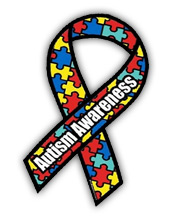Posts Tagged ‘Autism spectrum’
TIES program encourages positive reinforcement for children with behavior problems
Posted on: May 18, 2009
- In: ADHD | Autism spectrum | Family | Flood of 2008 | Parenting | special education
- 5 Comments
CEDAR RAPIDS — After the Ellis Boulevard home they were renting flooded last June, Patty Blackwell and her family camped and stayed with relatives until they were able to move back.
This disruption in their routine took its toll on the family, especially on Blackwell’s 3-year-old daughter.
“She threw temper tantrums, was non-compliant,” said Blackwell, 46. “I let her walk all over me.”

Charts are kept for each child's progress on specific tasks.
At her wits’ end, Blackwell enrolled her daughter in the TIES program when it first became available in Eastern Iowa in October. TIES, Teaching Interventions to Empower and Strengthen Families, is a proactive parenting program for children under 6 with mild to severe behavior problems.
What makes the program unique, according to program coordinator Craig Meskimen, is that parents and children go through the program together.
Parents are taught eight strategies focusing on positive interaction with the child. The key is telling children what they are doing right rather than what they are doing wrong.
The eight strategies include:
- State expectations in advance.
- Catch your child being good.
- Limited reasonable choices.
- Say “when,” “then.”
- Plan ahead.
- Know what’s reasonable.
- Stay calm.
- Use neutral time.
Blackwell said her daughter is a success story of the program.
“Thank God for this place,” she said at a recent open house at the Resource Center Building on the St. Luke’s Hospital campus, 1026 A Ave. NE.
Blackwell is in the “payback” phase of the program. Funded by a grant through Linn County Community Empowerment, the program is offered at no cost to parents. In return, parents who have completed the program with their children pay back by training new families.
Aaron Jarvis, 31, of Marion, also is a charter parent who is now in the payback program. He was referred to the program by Grant Wood Area Education Agency.
Skeptical at first, he now says he’s a firm believer in the program.
His daughter, now 4, experienced separation issues after her mother left when she was a baby. Her aggressive behavior escalated when she was 3.
“She would scream for two, three hours at a time,” Jarvis said.
He could see a difference in his daughter within three weeks of the program.
“She wanted attention and knew bad behavior worked,” he said.
But parents need to ignore the bad behavior, as long as it’s safe, he said.
“They can get the attention they want by being good.”
With his daughter’s behavior under control, things are less stressful at his house.
“Behavior problems with a child are the last thing you need with the flood and recession,” he said. “You want to be able to go out and have a good time.”
He believes in the program so much he plans to volunteer after his payback time is completed.
“It is so gratifying to see changes in other children,” he said.
He distributes fliers at preschool and day care to spread the word about the program.
The program originated in 1969 in Tennessee to treat children with Down syndrome and those on the autism spectrum. However, Meskimen said there is no minimum or maximum behavior for a child to qualify for the program.
Keith Pitts, 33, of Cedar Rapids, said 90 percent of the program is focused on changing the parent, not the child.
He and his wife, Emily, adopted three children from foster care, making the bond even more difficult from the onset.
His son was diagnosed with attention deficit hyperactivity disorder, and Pitts wanted to try this program before medication.
“He’s an amazingly different kid,” he said.
Ignoring the bad behavior is difficult at first for both the parent and the child, he said.
The child needs to realize that “no matter how I act out, I’m not going to get attention unless I’m being good,” Pitts explained.
Parents need to be consistent with the program’s skills or the information will not be retained, he said.

Kenny and Kim Petersen check out the charts marking their son's progress at home.
Kim Petersen, 32, of Cedar Rapids, came to TIES “pulling my hair out” fighting with her husband, Kenny, about their son’s behavior problems.
“Now he’s done a 360,” she said of her son. “It’s not just us teaching him, he teaches us.”
Parents are encouraged to keep a tally of every time the child does something negative. Parents also are encouraged to be consistent with ignoring bad behavior and recognizing good behavior.
Once the program is completed, the families take the strategies home with a written plan. Andrea Dorn, of the Abbe Center, said the home program is written in three phases. First, the TIES staff writes a home program for the parents, then the parents and staff write a program together. Finally, the parents write their own home program to fit their child’s needs.
- In: Autism spectrum | Books | Family | Parenting | relationships
- Leave a Comment
Gazette Communication’s Information Content Conductor Steve Buttry (in short, my boss) posed a question at the end of his March 23 column regarding the Linn Area Reads program. This year’s program features “Tallgrass” by Sandra Dallas and Harper Lee’s classic novel, “To Kill a Mockingbird,” which delves into the delicate issue of racism in America. Steve asked readers what issues a modern-day Harper Lee should address today.
Longtime Cedar Rapids resident and Gazette reader Ray Buck e-mailed Steve of a possible Harper Lee in our midst today.
Ray wrote: “Cynthia Lord and she has written a lovely children’s book, Rules. It is a novel that looks at feeling different yet finding acceptance in today’s crazy, demanding world. You mentioned both of your books were told through the eyes of a young girl. Rules is a story told by a 12 year old girl with an autistic younger brother. About a snooty new neighbor and a young man, ‘handicapped’ with no voice.”
Steve forwarded me Ray’s e-mail because I often write about my son, Sage, who is on the autism spectrum and has ADHD as well. Ray is the grandfather of an autistic child, Jack.
What struck me most about Ray was his willingness to learn about the disorder that affects approximately 1 in 150 children. Autism is a difficult disorder to understand and, sometimes, to accept. It affects an individual’s ability to socialize, make transitions and in extreme cases, function. There are outbursts, tantrums, obsessions, inappropriate comments, incessant talking, and, sometimes, no talking at all.
It is instinctive to think these children are “bad” and their parents are not disciplining them enough. It can be especially difficult for grandparents and others in Ray’s generation (he’s 68) to understand these children. But Ray and his wife, Karren, are making every effort to understand their grandson.
When the Bucks’ grandson was diagnosed with autism, their son Brad and his wife Traci involved them with the process.
Ray wrote me in an e-mail: “I don’t recall we had a difficult time understanding or accepting his diagnosis because his parents included us in everything, right from the start. What they were feeling, what they were doing to help Jack.”
 April is Autism Awareness Month and I hope more and more people take on Ray and Karren’s attitude of understanding and acceptance.
April is Autism Awareness Month and I hope more and more people take on Ray and Karren’s attitude of understanding and acceptance.
The Bucks were kind enough to drop off a copy of “Rules” for me at the office. I finished reading it last night and agree that it teaches a valuable lesson and should be read by many, especially young students.
“Rules” focuses on a 12-year-old girl, Catherine, who is torn between taking care of her younger autistic brother and making friends with the new hip girl next door. To make things more complicated, she develops a friendship with a non-verbal boy in a wheelchair while going to her brother’s occupational therapy appointments.
At that age, there is a need to impress peers , and having your “different” brother tagging along and acknowledging your handicapped friend to the “cool kids” just doesn’t fit the mold.
I won’t tell you the ending, but I think you’ll be pleased with Catherine’s maturity.
I have set up an Autism Awareness Month page on the Frumpfighter blog. I invite anyone affected by autism to share their story. Please e-mail me at angie.holmes@gazcomm.com or ajh1109@mchsi.com

Recent Comments